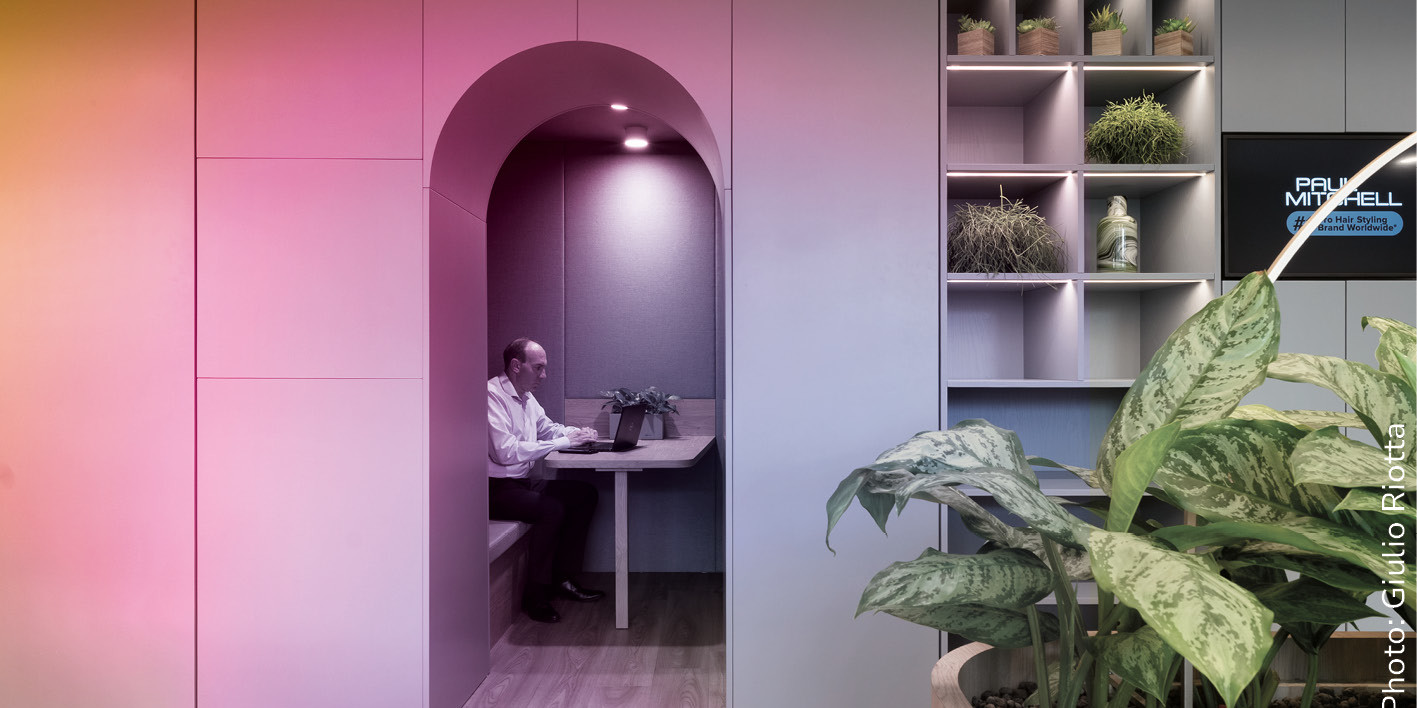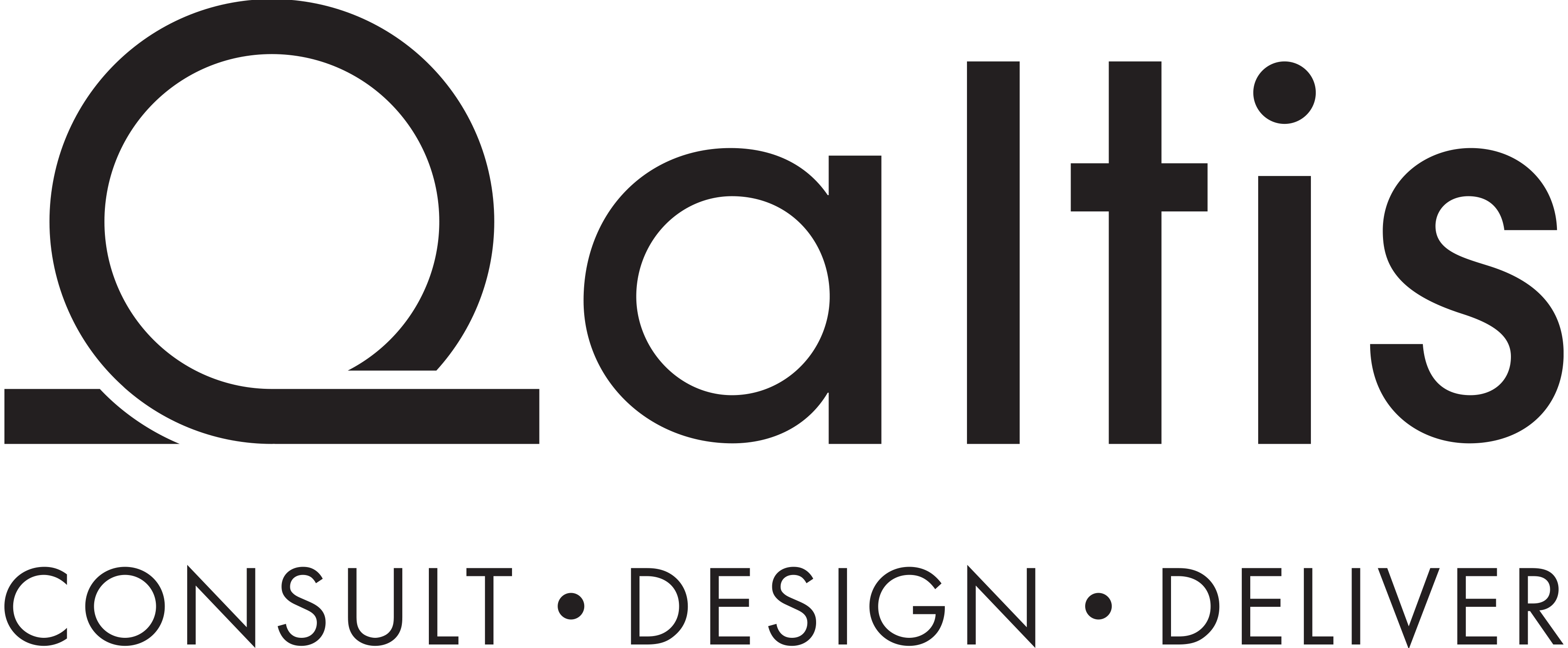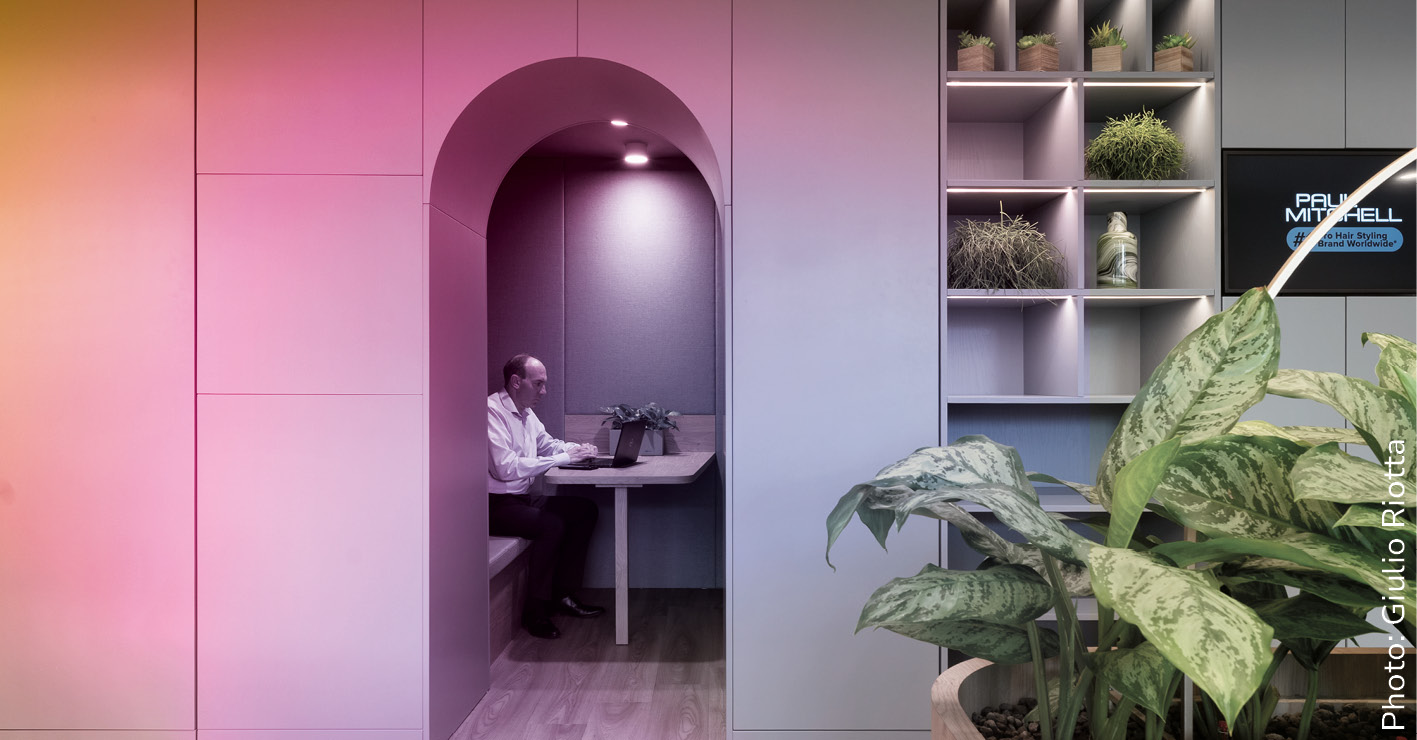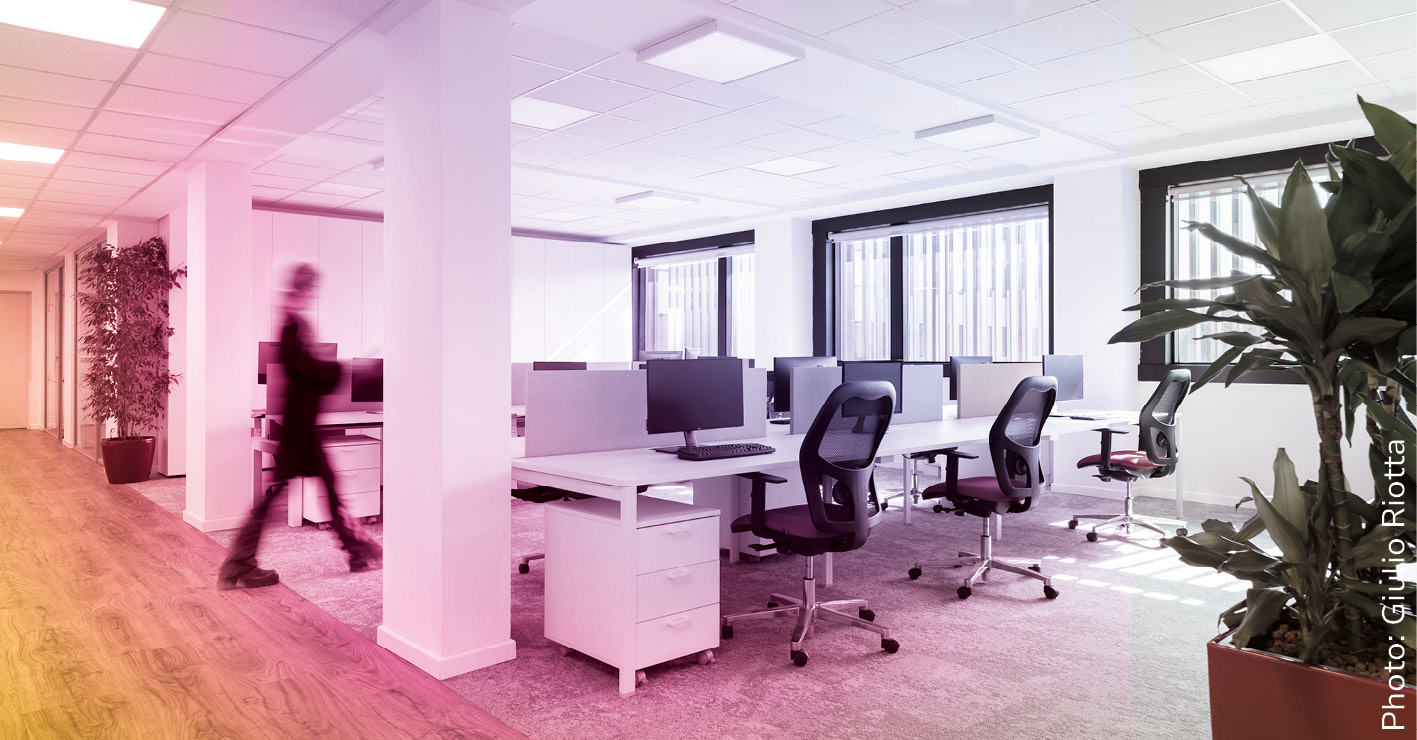Redesigning work, elevating lives: introducing Altis Research
Let’s start with an inconvenient truth: we spend more time at the office than in bed. And no, that’s not a modern metaphor. It’s a fact.
Yet while the way we work has morphed more times than Madonna in the ’90s, the way we design the spaces we work in has often stayed stuck in outdated models. That’s why Altis Research was born: to stop chasing LinkedIn trends and start observing work for what it really is. And what it could become.
A living lab, made up of architects, analysts, researchers, project managers—and yes, everyday people who step into offices. Our idea? To use science to improve the work experience. But without losing the right to lightness—because as Calvino said, “lightness is not superficiality; it’s gliding over things from above.” We take work seriously. But that doesn’t mean making it rigid. It means understanding what actually works, what stimulates the brain (and what shuts it down), what brings a team together, what lowers stress, and what sparks creativity.
We collect data and stories. We question ready-made ideas. The result is a growing platform of content, articles, insights and provocations that look at the workplace as it’s rarely been looked at before. No Monday-morning motivational quotes. No romanticising remote work as if wearing pyjamas were the answer to happiness. Altis Research is here to take a long, honest look at contemporary work: an observatory for those who design spaces, but also for those who inhabit them, endure them, or reshape them. Because our goal is not just to analyse work. It’s to rewrite it—with those bold enough to imagine it differently.

The workplace isn’t neutral (spoiler: it never was)
According to our data, nearly 90% of people believe their work environment directly affects their well-being. And not just in obvious ways. The routes we unconsciously take to the break area, the way we move around the office, the interactions we initiate—all these small choices say a lot about how we work (and live). Altis Research starts from a simple premise: you can’t design a space without observing the people who live in it. And we do so with rigour—interviews, biometrics, behavioural mapping—but also with a very human question: “How do you feel, in here?” From the study of behavioural patterns, we’ve uncovered some surprising insights: areas designed for collaboration often used for solitude; informal corners that become hotspots for spontaneous innovation. Because space speaks. And if we listen carefully, it can become an ally for well-being and performance. Altis also draws inspiration from the PERMA Model of positive psychology, which outlines five key dimensions of human flourishing: Positive Emotions, Engagement, Relationships, Meaning, and Achievement. Too many concepts? Maybe. But our goal is to make these not just desirable, but designable.
You can’t buy productivity in hourly bundles
No, we’re not becoming less productive. We’re just increasingly compressed.
Between notifications, deadlines and never-ending meetings, we forget that the brain isn’t a bicep to be trained—it’s a complex system that needs rest, variation and stimulation. And yet we insist on treating it like a calculator to be squeezed for every last neural impulse. The truth? Downtime isn’t wasted time.
It’s metabolic time. That’s why we explored the real benefits of unstructured spaces: environments where the absence of function is the function.
Downshifting, decompression, micro-pauses—call them what you like, but the fact remains: teams with access to informal areas report feeling clearer, more connected and less stressed. And no, it’s not just a design issue. It’s a rhythm issue. Or, as any jazz musician would tell you: it’s not just about the notes you play. It’s about the ones you leave out.
From research to dialogue: an interdisciplinary conversation
Let’s be clear: Altis Research doesn’t stop at good ideas on paper. On 21 March, during the Conscious Cities Festival at Triennale Milano, we brought these themes into open conversation with neuroscientists, architects, designers and philosophers during the event Regrounding: Reconnecting Bodies & Space.
An afternoon of bold questions and cross-pollination, which made visible (and tangible) what we’ve been seeing in the data for some time now: you can’t talk about space without talking about bodies, attention and perception.
Among the speakers, Dr Nicoletta Brancaccio—curator of the event and a key voice in the discussion around space as an empathetic and neurological interface.
A powerful reminder that the future of work isn’t just about efficiency.
It’s about presence, connection, and intentionality.
By now, you’ve probably guessed: we’re not here to offer convenient answers. We’re here to ask uncomfortable questions—with method, with irony, and with real curiosity. Because the way we work shapes the way we think, relate, and imagine the future. And as we emerge from years of rigid models and false narratives around productivity and disconnection, maybe it’s time to ask: What kind of work—and workplace—do we actually want to build, if work is where we spend most of our lives? Let’s find out. Together.
Do Offices Shape Cities? How a Place Can Influence Work and Lifestyle
An office’s location isn’t just a dot on the map—it defines how people work, interact, and live. It’s the epicentre of daily routines, a hub for networking, talent attraction, and company culture.
And its position within the city? It matters. Oh, it seriously matters. Because there’s a world of difference between working in a glass tower a stone’s throw from the financial district and spending your days with hoodie-clad startuppers in a converted factory-slash-creative hub.
Let’s not kid ourselves: it’s not the city that sets the tone. It’s the neighbourhood.
And while there’s no right or wrong, it’s essential to understand that choosing where to open an office isn’t just a real estate decision—it’s a strategic one. From Milan to Rome to Lisbon, there are neighbourhoods rewriting the rules of work. Let’s take a look.

“Milan l'è un gran Milan” (which roughly means: “Milan is truly a great Milan”)
Working in Milan can mean a lot of different things. It could be a daily obstacle course of traffic jams, espresso-fuelled meetings, and high-speed lunches among the skyscrapers of Porta Nuova. Or it could mean a slower pace among urban parks and high-tech offices along the Navigli.
The city is a patchwork of work cultures defined by its neighbourhoods: Chinatown, for example, is evolving into a melting pot of offices (and dumpling incubators), while Lorenteggio is shedding its industrial past and embracing a new kind of business energy.
Case in point: Niterra’s headquarters at the L Building, Lorenteggio Business Center (link). Once a gritty industrial zone, the area is now a strategic hub for businesses looking for smart spaces, solid transport connections, and flexible infrastructure.
The Niterra office is designed to maximise collaboration and employee wellbeing, with adaptable layouts and sustainable solutions. A choice that perfectly reflects the neighbourhood’s transformation—from manufacturing fringe to contemporary business node.
Rome: Where the Office Meets the Grande Bellezza
Rome is many things—but static? Never.
Sure, working from a historic building with a view of the Colosseum has its charm (until you’re blocked by a protest or a film crew). But today, the real action is happening elsewhere.
Neighbourhoods like EUR and Ostiense have become the gravitational centre of Rome’s business scene, thanks to modern infrastructure, next-gen workspaces, and a growing corporate ecosystem.
Just look at JPMS’s office at 23/31 EUR Center (link). A space that fully embraces the EUR identity: corporate, but never dull.
The office is built for maximum operational efficiency, with modular layouts, advanced digital infrastructure, and a functional design that makes it a textbook example of how companies can thrive by aligning with their neighbourhood. For those working here, the future of business has already begun—just with better coffee breaks in Piazza Marconi.
Lisbon: Where Start-Ups, Surf, and Hybrid Offices Coexist
Forget the traditional office: in Lisbon, work happens everywhere—from riverside co-working spaces to former factories reborn as creative hubs.
The city has become Europe’s test lab for flexible work, with start-ups rethinking what a “headquarters” even means and neighbourhoods that make dynamism part of the daily routine.
A prime example? The headquarters of a confidential luxury client at Oriente Green Campus (link). Located in Parque das Nações—a district born from the regeneration of a former industrial area—the office is part of an ecosystem where business, residential life, and green spaces thrive in harmony.
The interior design reflects this vision: hybrid environments, sustainable materials, and layouts built for fluid, modern workstyles. If the future of work is flexible, they’re already living it here.
Right Neighbourhood, Right Culture
The message is clear: cities shape business strategy, sure—but more than that, they shape how we experience work.
So, for companies on the hunt for their next office, the question isn’t just about cost per square metre. It’s: Where do I want my people to show up every day? And just as crucially: What kind of work culture am I trying to build?
Because in the end, the right neighbourhood doesn’t just house an office. It helps shape the people who work on it.
Biophilic Office: Why the Future of Work Has Never Been So Caring
Ever walked into an office and felt… completely drained? Stale air, unforgiving neon lights, and desks crammed together like a conveyor belt. And then we wonder why creativity bolts out the door. Enter biophilic design: a smart (and by now, essential) way of shaping spaces that don’t just function—they breathe. What begins with a token plant or two quickly snowballs into a living, breathing ecosystem that lifts the mood, lowers stress levels, and gives your brain a proper workout. And no, it’s not just a vibe: data collected by NHS Forest shows that nature-rich environments improve sleep quality, lower blood pressure and dramatically reduce anxiety and cortisol levels. Even ten minutes surrounded by greenery can make a tangible difference to how we experience pain and stress. Forget office aromatherapy—this is the real stuff.
More nature, less burnout. Simple, right?
We spend most of our lives indoors, bathed in artificial light and recycled air. So it’s no shocker when we hit that 3pm wall and start blinking at the screen like caffeinated zombies. An office built with natural ventilation, green walls and lighting that aligns with our circadian rhythms isn’t just easy on the eyes—it’s a game-changer for your health. The air’s cleaner, your brain fog lifts, and your eyelids stop trying to slide shut.
But wait—there’s more. Even a sliver of sky or a couple of trees outside your window can work wonders for your wellbeing. The science says so, and your brain agrees (cheers for that). According to the Green Space for Health programme, regular access to green space improves mood and boosts immune function. People feel more connected, more energised, more grounded. And, crucially, less likely to hurl their mouse across the room. And water? Hugely underrated. Fountains and water walls aren’t just there to impress on Instagram—they reduce background noise and make spaces acoustically soothing. What’s more, research shows that they lower cognitive load after intense mental tasks. Like surviving three back-to-back Zoom calls without throwing your laptop out the window.

Less plastic, more brain cells firing
Biophilic design isn’t just about looking good. It’s (first and foremost) about sustainability. Solid wood, recycled materials, energy-efficient systems—choosing this path means lowering your carbon footprint and improving the everyday lives of your people. Which, just to be clear, should be non-negotiable. The real revolution? Flexibility. A biophilic office is never static—it flexes, morphs, evolves. Modular spaces that change function throughout the day. Quiet corners that turn into impromptu meeting spots. Relaxation zones that double as creative launchpads. And then there’s touch. Literally. The brain responds better to natural materials—raw wood, stone, organic textiles. It’s carved in stone: less plastic, more honest texture. And the bonus? According to the Community Forest Trust (NHS Forest’s partner), regular contact with natural materials stimulates neuroplasticity, improves short-term memory, and boosts mental adaptability. Not bad for a humble wooden desk, right?
Productivity, engagement, relationships—the space we work in shapes it all. It influences how we think, how we communicate, even how we relate to each other. A biophilic office isn’t just “nicer to look at”—it’s a place where people actually want to be. A space where ideas flow, connections spark, and collaboration happens naturally. The future of office design isn’t about cramming in more desks per square metre. It’s about building environments where people feel good, not just present. In hospitals, patients with a view of nature heal faster and need less medication. Now imagine what a rooftop garden could do for your finance team at year-end.
And if that means knocking down a few cubicles to make space for an indoor jungle… well, we’ve just found the perfect set for the next happy hour.





